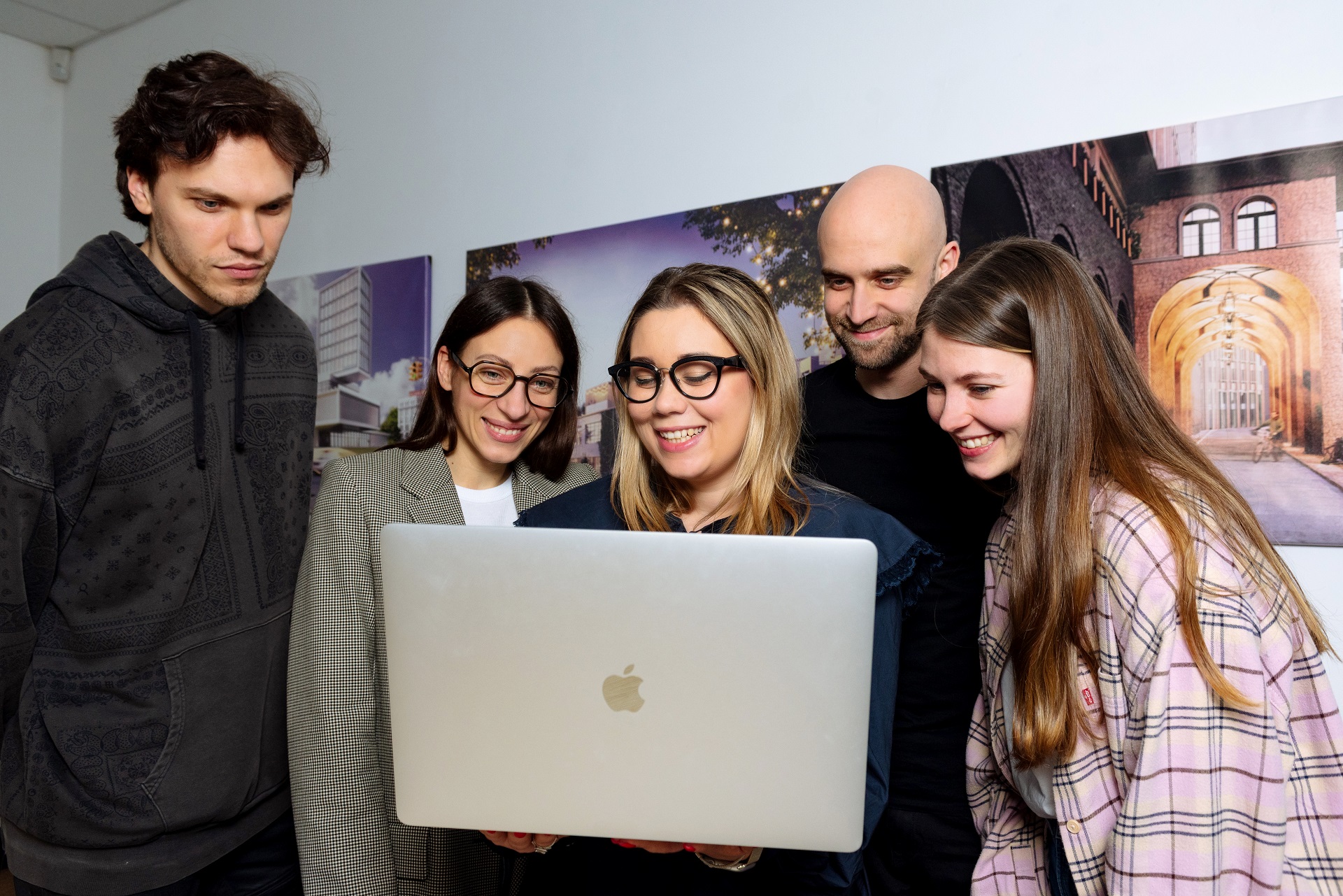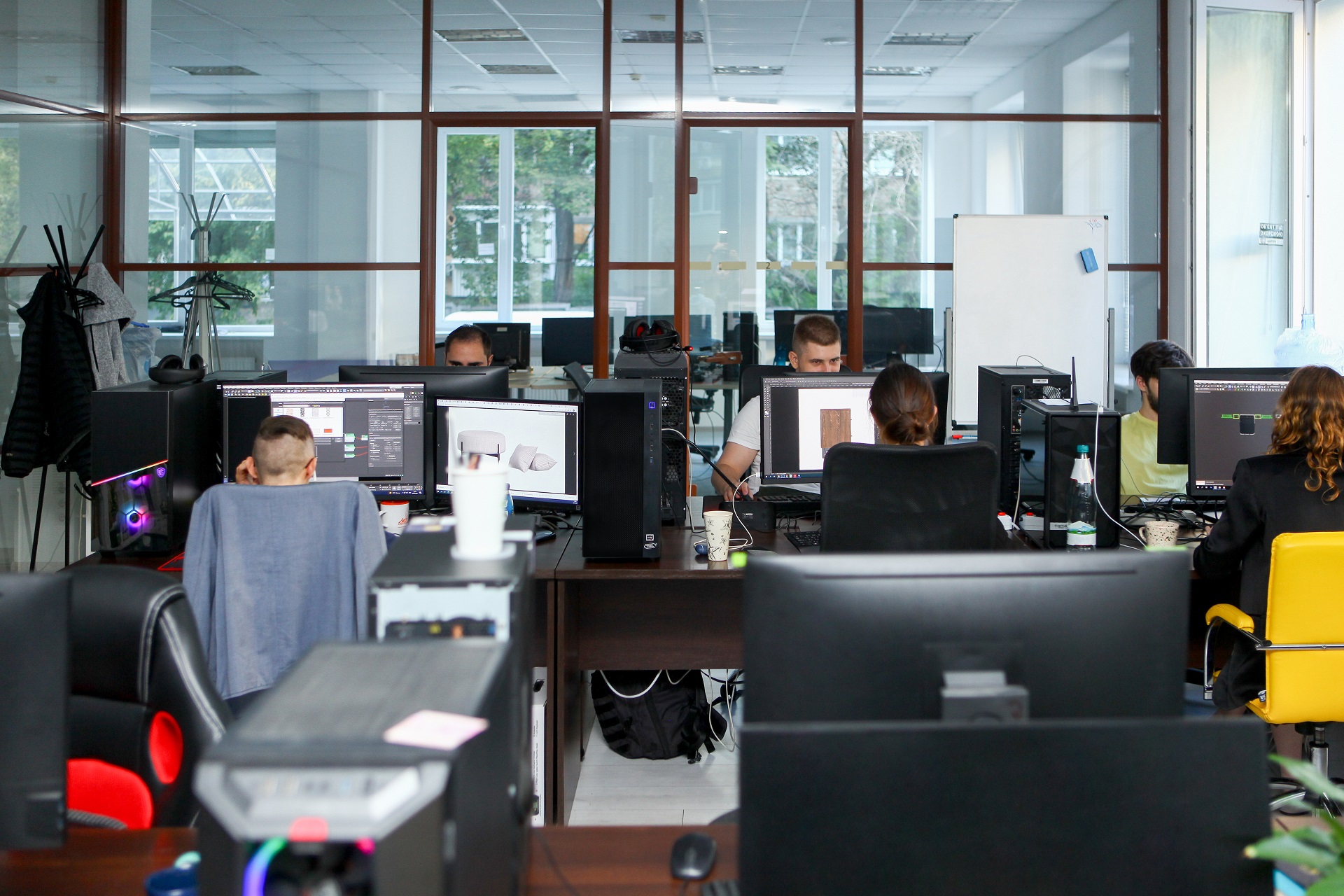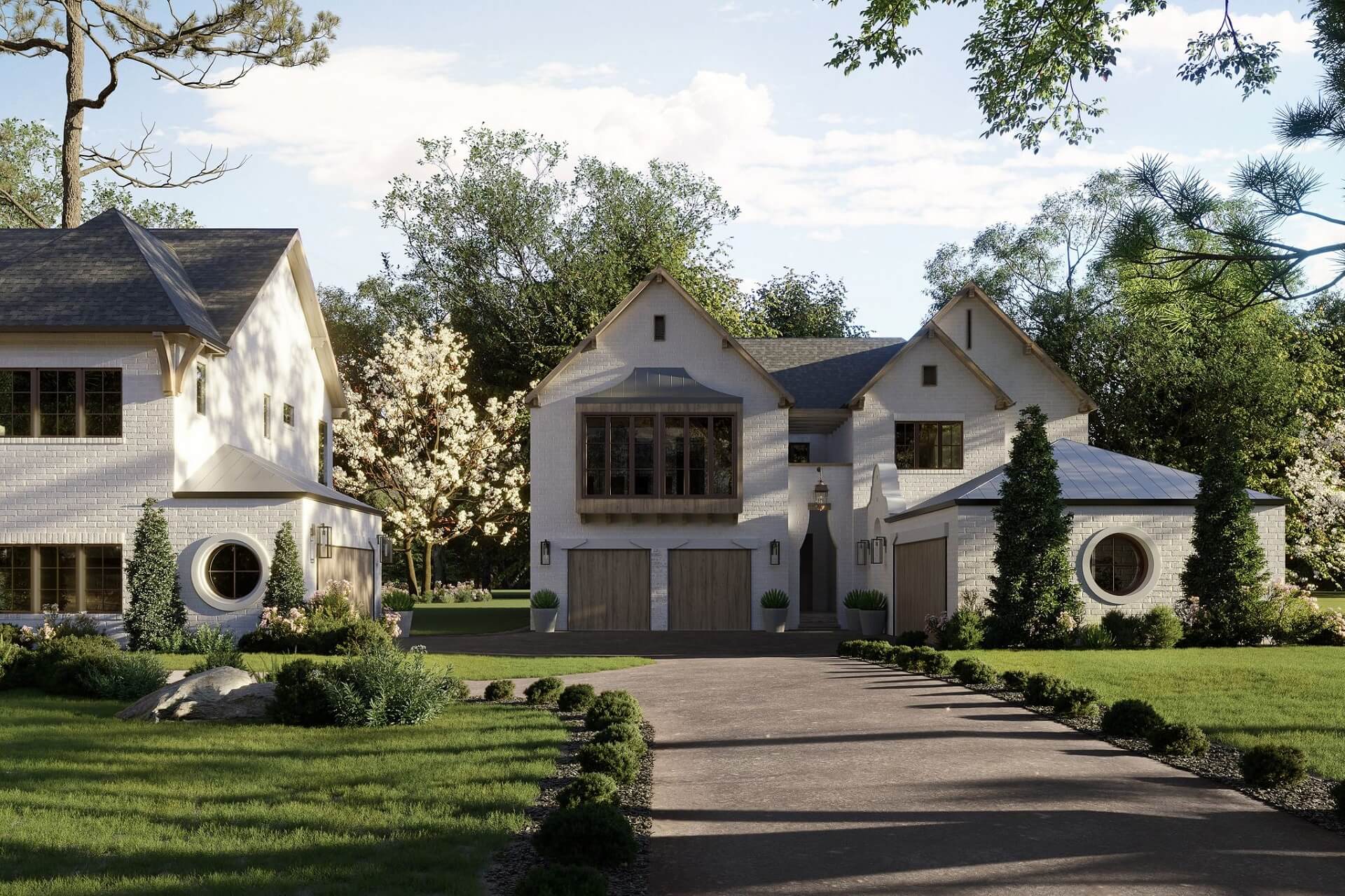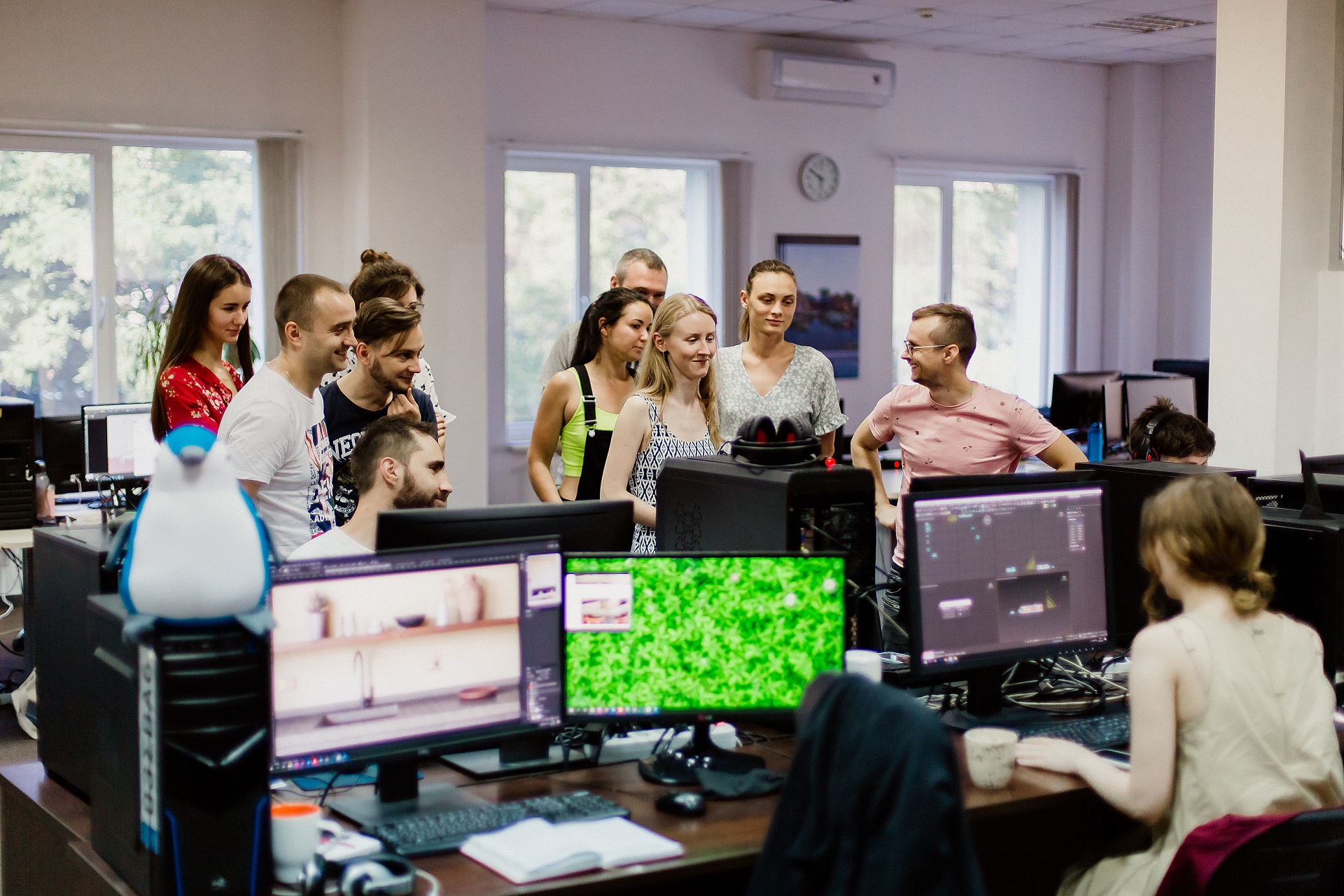Why are CGI project managers essential for both clients and artists of a 3D visualization company? PMs are responsible for all kinds of non-creative yet crucial tasks. These include completing briefs with clients, managing deadlines, distributing tasks among team members, and so on. If 3D artists were in charge of all that, it would take clients ages to get their renders. But fortunately, there are PMs who take care of all the management aspects. This way, they let 3D artists focus on creating photoreal masterpieces and help clients get the perfect results — always on time.
So, how exactly do ArchiCGI’s project managers help streamline work processes for both clients and artists? To discuss that, we’ve invited our Senior project manager Christina Kostanets for an interview.
Chris has unveiled all the ins and outs of a PM’s work in our 3D rendering company. She also shared tips on how to create a perfect brief, what to do if you don’t have one at all, how to have a project completed successfully within a limited budget or tight deadline, and much more. Let’s dive into this treasure trove of knowledge right away!
Chris, tell us your story.
I studied for 6 years to earn my master’s degree in fine arts and architecture. However, it would be accurate to say I got a job in the archviz industry by chance. In 2016, I just graduated and got my diploma. And the next day, my university friend, who was already working at ArchiCGI at the time, offered me to try my hand at project management. I was up for the challenge! My journey at ArchiCGI started two days after I got this offer.
How many clients do you work with today?
I’ve been a member of the ArchiCGI team for over 6 years. As for now, I work with about 200 clients. However, if you asked me how many customers I have had throughout all these years, I would struggle to answer. There were so many! All I can say is that the number is definitely impressive.
How would you describe your mission in the projects?

Chris mentoring Junior PMs
I am responsible for plenty of things: helping clients complete their SOWs (scopes of work), distributing tasks among 3D artists, checking and keeping to deadlines and quality standards, and performing other activities related to workflow management.
As a seasoned PM, I often manage an enormous number of projects at the same time. They are all very different and always interesting. Every single task holds a unique opportunity, offering something I couldn’t get to know elsewhere. That’s why I’m happy to work with clients from all over the world and to be a part of their amazing projects. It inspires and helps me grow. So, I could say that my mission is to assist clients in organizing their workflow with us while continuously developing myself as a professional.
What’s more, I’m not just a PM — I am a senior PM, a mentor. I am the most experienced in that position in the whole company. So, my second mission at ArchiCGI is mentoring junior PMs. This way, I ensure project management in the company is on a proper level.
My mission is to assist clients in organizing their workflow with us while continuously developing myself as a professional.
How do you help clients create a perfect brief?
In the course of these 6 years, I have learned what documents and references are essential for starting a project. I always know what to ask, clarify, or warn a client about to prevent any inconvenience.
I deter junior client managers from starting a project before getting a complete 3D technical assignment. Actually, I’m pretty strict in this regard! I spare no effort to explain that having all the necessary references is the key to delivering great results.
Together with my team, I have developed custom SOW checklists for all types of tasks (exteriors, interiors, etc), and we always use them. Before starting a project, I thoroughly study all the received files. When I see something is missing, I immediately ask the client to send it if possible. Then, I do a recap with a 3D artist who will do the task, and we get down to work.
What do you do in case your client cannot provide a detailed brief?

3D artist from Chris’s team
It may happen that a client has no time to give us a comprehensive SOW and explain every detail. In such cases, a 3D artist and I compile the brief ourselves by offering different options and asking a client to make a choice. If that does not work either, I ask a client manager for permission to do all the unspecified aspects at our discretion. However, my recommendation is to avoid this scenario. Of course, we will do our best to deliver the perfect result. But it’s much easier to do so when we fully understand the client’s vision.
Some clients may have no idea how to make a brief at all. In such a case, the project manager’s job is to help them. For instance, PMs will explain why visual references are always better than text descriptions. Because even for the most experienced and professional 3D artist, it’s much easier to comprehend one’s idea visually.
And what if a client does not have any references at all?
We can handle a project with few or even without references. Let me tell you about a recent case. A client asked us to help him with designing an entire settlement. But all he had in terms of references was a cadastral plan and a link to his competitor’s website. He was yet to receive permits to buy this land!
We can handle a project with few or even without references.
So, here’s what we did. I offered this client to divide our work into several parts, and he agreed. First, he used our drafting services, and this way, we created and approved a site plan. Then, based on it, we proceeded to create exterior and interior 3D renderings. It is worth mentioning that the client hasn’t sent us any references for those. We did everything at our discretion. Eventually, the client was very pleased with the result and the project turned out really well.
What criteria do you use to distribute tasks among your team of 3D artists?

Chris’s CGI team
As a project manager, I always know the workload of all 12 artists on my team. And, of course, I am aware of the individuality, skill set, speed of work, and work capacity of every artist. I consider all these factors when distributing tasks.
For instance, there are 3D artists who can work on several tasks in parallel and complete them all successfully. And some artists need to focus deeply on only one task at a time to deliver excellent results. For each task, I make this choice from both knowledge and intuition, using an individual approach. All in all, it depends on an artist’s personality, experience, and the type of project.
Is it possible to complete large project on a small budget?
If our client has a limited budget, we can always offer alternative options that will help to complete their project. The exact solution depends on a client’s requirements and goals.
Very often, one can save the budget by reducing the amount of custom modeling. The best way to do so is by using ready-made CG assets. For instance, a client can choose among more than 74 000 3D models of furniture, decor, lighting fixtures, and other objects in our cloud-based library. This approach saves both time and money.
In some cases, it’s possible to decrease the need for custom 3D modeling of minor details with the help of Photoshop. For example, if a brief contains a quality photo of the exact lamp or vase needed, we can use it in the renders. This approach is a blessing in projects where modeling of that vase would eat up 50% of the budget.
Very often, one can save the budget by reducing the amount of custom modeling.
It may happen that none of the mentioned approaches work. But we can always come up with some individual solution. For example, we have a client with exceptionally unusual and beautiful design projects. My 3D visualization team adores working on them. But it happens that the amount of custom modeling this client needs is out of the budget. In this situation, we ask our artists to use low-detail modeling for objects that are in the background. This way, we deliver quality images on a smaller budget, and our client is absolutely happy with the result.
How do you check the quality of intermediate and final 3D rendering results?

3D render made by Chris’s team
I have an established scheme for checking the project results. First, I make sure that everything corresponds to the brief in terms of provided drawings, objects, textures, and so on. After that, I check the renders for compliance with our studio’s inner quality standards. Only when I’m absolutely sure that the result complies with both technical assignment and studio standards to the last detail, do I submit it to the client.
My architectural education as well as continuous training at ArchiCGI helps me greatly in terms of checking the imagery. I mean, I can always envision what the end result must look like. Also, I’m passionate about architecture in general. I keep up with the latest trends by reading industry-specific magazines, reviewing new works of famous architectural firms, and so on.
My architectural education as well as continuous training at ArchiCGI helps me greatly in terms of checking the imagery.
How do you, as a project manager, guarantee to keep to a client’s deadlines?

3D render made by Chris’s team
From the beginning of the project to every review round to the completion, I always keep my clients informed about when to expect the next result. I do it by messaging them and updating the task timer in CGI CRM, our custom-made 3D project management system.
To make sure the timing is accurate, I sometimes give a 3D artist extra time when setting deadlines in the system. However, there are situations where deadlines need to be postponed for a certain reason. In such cases, it is necessary to explain promptly, clearly, and honestly to the client why the delay is taking place. I never stay silent. My clients must always know at what stage their project is.
How to complete a very large project on a tight schedule?

3D render made by Chris’s team
If a 3D architectural exterior rendering project has tight deadlines, the first step is to come up with a well-ordered plan. To do so, the entire team gathers to create an internal pipeline. As a rule of thumb, the work is divided among several performers. This always helps speed up the process. Each artist takes responsibility for a specific part of the work. Also, oftentimes, a team lead is appointed for such projects.
In big urgent projects, it is very important that the client manager is part of the team and helps convey all the important points to the client. It is always necessary to document and outline everything to the client, the team, and oneself. Only when everyone is on the same page can the project be successful.
If a project has tight deadlines, the first step is to come up with a well-ordered plan.
What makes the base for the effective cooperation of a client and a remote 3D visualization team?

Chris’s CGI team
The most essential factors are the desire of both parties to achieve that cooperation. On our side, we always do our best to not just attract a client but also to create a working environment that makes them want to stay with us. We constantly improve our architectural rendering workflow, educate ourselves, and look for the best approaches to our clients.
Also, sharing honest opinions and thoughts is vital to establish effective communication. It is a very unfavorable scenario for young managers to agree to everything just to hear the client saying “yes”. If they do so, afterward the team will panic in search of a solution to the impossible task they agreed to. It doesn’t work that way. Sometimes it is necessary to explain to a client the limits in terms of deadlines, technical capabilities, and the like. And then, when both sides are on the same wavelength, can there be a mutually beneficial, long-lasting collaboration.
Sharing honest opinions and thoughts is vital to establish effective communication.
What emerging trends have you recently noticed in the archviz industry?

3D render made by Chris’s team
Now, 3D modeling and rendering software develops rapidly and delivers more and more photorealistic results. Therefore, our clients’ quality demands are increasing all the time. I enjoy watching how my 3D artists sharpen their skills every day to stay on top of new trends and innovations.
For example, there is a growing number of clients who ask us to provide results in Unreal Engine. Recently, we’ve done a project for a company from Belgium. Their goal was to show their new furniture collection in photorealistic 3D lifestyle images. The client wanted to compare the quality of V-Ray and UE scenes to decide which of them to render in an ultra-high resolution of 40k. Following their request, we created two similar scenes in the two programs.
After reviewing those two scenes, the clients abandoned the idea of 40k rendering altogether. They then explained to us that 40k was no longer necessary because the scene in Unreal Engine already created a decently realistic output, eliminating the need for expensive high-resolution visualization.
3D modeling and rendering software develops rapidly and delivers more and more photorealistic results.
A scene in V-Ray costs approximately 2.7 times less than in Unreal Engine. So, if you only need 1-2 frames and exceptionally high quality, I would recommend V-Ray or Corona. But if your project requires a lot of angles of the same scene, UE is an optimal solution.
How will AI impact the archviz industry?

3D render made by Chris’s team
ChatGPT is a tool I have had a chance to test myself and started using in my work. I like that it not only helps to structure text into coherent, easy-to-understand, and concise points but also assists in rephrasing complex email texts to make them more elegant, professional, and clear. I enjoy learning new phrasings offered by the chat and have been actively using them in my work lately.
We also have another way to benefit from ChatGPT. The ArchiCGI team records client calls, transcribes them into text, and feeds it to the bot. Then, the AI creates a task list based on the information received. This saves us a significant amount of time and effort that would have otherwise been spent creating a detailed technical brief. Consequently, we are able to complete projects faster and more efficiently for our clients.
As for visual-based AI tools, I can say our artists are actively using Midjourney to work faster and deliver beautiful concepts to clients in the early project stages. You can learn more about this process here.
I’ve also heard that our developers are working on a custom visual AI tool that will help both specialists and clients. This topic, however, is extensive and probably requires a separate interview.
We are infinitely grateful to Chris for this interesting talk. Now, we’re sure you have the most comprehensive answer to the “why are CGI project managers essential?” question. Hopefully, this interview with Chris provided you with some useful tips on archviz workflow and encouraged you to entrust your 3D projects to ArchiCGI. Now you can be sure they are always in good hands with us!
Get your project estimated in just 1 hour - fill out this brief!
Looking for a reliable provider of 3D services who will take care of every detail of your tasks? Contact ArchiCGI and enjoy the highest level of project management combined with the ultimate quality of results!
Chris Kostanets Chris manages the work of 2 CGI teams and teaches Middle PMs. She loves Scottish landscapes, Ancient Greek culture, and Plein-air painting. At home, Chris is a caring parent for 3 cute chickens and a magnificent rooster.

Senior Project Manager, Mentor



